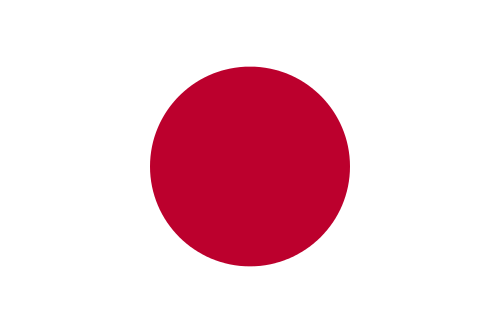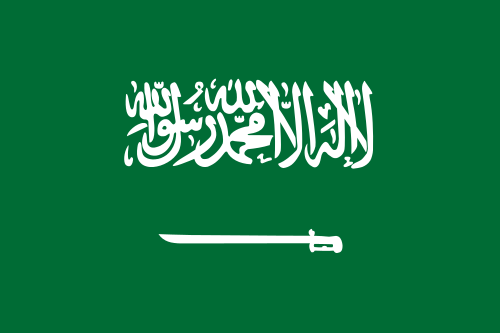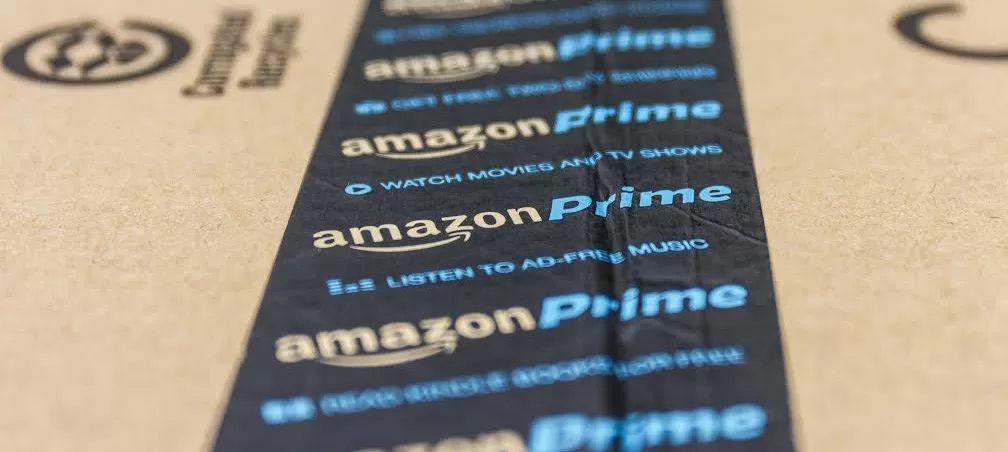Define exact spec (type of leather, GSM/thickness, tanning/dye, colorfastness limits) before contacting suppliers.
Use 3 sourcing channels in parallel: vetted factory list (direct), trade platforms (Alibaba/1688) and targeted trade shows / sourcing agents.
Require lab testing (colorfastness, abrasion, tensile, VOCs/formaldehyde when relevant) and set clear AQL/acceptance criteria.
Calculate landed cost (unit cost + freight + insurance + duties + VAT + clearance + inland) for every SKU and use that to decide shipping mode (sea vs air vs rail).
Protect yourself with contract clauses: MOQ, payment schedule, warranty, inspection & rejection process, arbitration/venue.
Table of contents
Who this guide is for
Quick market snapshot: leather types & where they fit
Before you start: specification & target COGS (templates)
Where to find suppliers — channels, how to vet them, outreach templates
Sampling and testing — what to demand, how to interpret reports, AQL guidance
Negotiation & contract terms you must include (sample clauses)
Shipping & logistics — sea / air / rail / courier: when to use each and how to optimize costs
Landed cost worked example (step-by-step)
Customs, HS chapters, regulatory checks and documentation by destination
Risk management: insurance, dispute handling, and remedies
Practical timelines & 30/60/90 day procurement playbook
Downloadable templates & checklists (what to include on your site)
FAQ (ready for schema)
1) Who this guide is for
This is written for procurement managers, brand owners, third-party logistics (3PL) operators and international freight teams who source leather (raw hides, semi-finished skins, or finished leather materials) from China and need a technical, actionable playbook to reduce cost, improve quality and minimize customs / transport surprises.
2) Market snapshot — leather categories and commercial fit
Broad categories you’ll encounter
Full-grain / top-grain cowhide: highest durability and price — used in premium bags, footwear, furniture.
Split leather / corrected-grain: lower cost; good for lower-tier footwear and accessories.
Nappa / lambskin: soft, for high-end fashion/linings — commands premium.
PU / PVC synthetic leather: much cheaper, consistent color, easier compliance for VOCs—widely used for budget products.
Exotic leathers (ostrich, snakes, crocodile): highly regulated — require proof of legal origin (CITES where applicable).
Commercial implications
High-value, low-volume SKUs → accept higher landed cost, use air/express for fast replenishment.
Low-value, high-volume rolls → optimize for sea FCL, negotiate MOQ and minimize waste (weight/CBM efficiency).
Regulatory markets (EU/US) → require chemical and VOC testing; account for rejection risk.
3) Before you start: specification & target COGS (what to lock down)
Minimum spec checklist (non-negotiable)
Product type: e.g., “Top-grain cowhide, aniline finished”
Unit of sale: per sq meter, per hide, per piece (specify yield per hide)
Thickness / GSM or mm range (e.g., 1.2–1.4 mm)
Color code & acceptable ΔE tolerance for color matching
Surface finish (matte, semi-aniline, embossed)
Edge treatment, backing (with/without cloth backing)
Acceptable defect rate (AQL value)
Required tests & standards (list; see section 5)
Target COGS worksheet (how to think)
Set a target landed cost per usable sqm/piece that allows your margin after retail costs. Build this backward: retail price → margin target → max landed cost → negotiate factory price.
4) Where to find suppliers & how to vet them (channels + vetting checklist)
Primary channels
Factory direct (best margin, requires due diligence) — use for ongoing partnerships.
Alibaba / 1688 — fast discovery; screen carefully. 1688 is for domestic sellers and often cheaper but needs Chinese-language handling.
Sourcing agents / trading companies — useful for small first orders or when you cannot visit China. Trade-off: higher fees, faster onboarding.
Trade shows (China International Leather Fair, Canton Fair, regional fairs) — best for sampling and seeing production capacity.
Industry referrals & LinkedIn — find factories that already serve your product category.
Vetting checklist (must verify)
Business license + export license (match company name on invoice)
Factory photos, production lines, capacity (monthly sqm or hides)
Export history & references (ask for 3 recent buyers & call/email them)
QC process & in-house testing equipment
Willingness to accept third-party inspections (SGS/BV/Intertek)
Samples lead time & sample charges; ability to provide test reports (VOC, dye migration)
Payment terms & banking (avoid unusual offshore accounts unless verified)
Outreach template (first contact — concise)
Subject: RFQ — [Your Brand] — top-grain cowhide (1.2–1.4 mm), 1,000 sqm
Hi [Name],
We need: top-grain cowhide, 1.2–1.4 mm, color [X], 1,000 sqm monthly. Please confirm: MOQ, FOB price per sqm, sample policy, lead time, production capacity (sqm/month), and ability to provide VOC/chemical test reports. Attach your business license and recent customer references.
Regards, [Your name, company, contact]
5) Sampling and testing — exact things to demand (and why)
Essential tests to request with samples
Colorfastness / dye migration: critical for textiles combined with leather; ask for ΔE tolerance and wet/dry rub tests.
Abrasion resistance (Martindale/Crockmeter): relevant for upholstery and footwear.
Tensile strength & elongation: ensures leather won’t tear under stress.
Thickness & weight consistency (GSM/mm): verify uniformity across roll/hide.
VOC / formaldehyde / heavy metals: mandatory for EU/US markets; especially required where REACH or similar rules apply.
Salt / pH & odor check: ensures tanning baths are cleaned — major source of rejection.
How to accept/reject a batch
Set AQL (Acceptable Quality Level) thresholds in your contract. Typical starting point: AQL 2.5 for major defects, 4.0 for minor defects (adjust by product). If you can’t accept defects, use tighter AQL (1.0).
Always require a pre-shipment inspection (PSI): photograph and sample the roll ends; check 10–15 random spots per 1000 sqm. For high-value orders, mandate third-party lab testing of a representative sample.
Third-party labs
Use recognized labs (SGS, Bureau Veritas, Intertek). Ask for a lab certificate and raw data; retain failed samples as evidence.
6) Price negotiation & contract terms you must include (practical clauses)
Negotiation levers
MOQs, multi-month commitments, payment term (30/70, 30/60), packaging responsibilities, lead time guarantees and penalties for late delivery.
Must-have contract clauses (copy/paste style)
Price & Payment: “Price per sqm USD X, valid for 30 days. Payment terms: 30% deposit by T/T upon order confirmation, 70% before shipment on presentation of B/L and inspection report.”
MOQ & Lead Time: “MOQ 1,000 sqm per SKU. Lead time 30 calendar days from receipt of deposit and confirmed specs.”
Quality & Inspection: “Buyer reserves the right to a 3rd-party pre-shipment inspection. Shipment proceeds only upon passing inspection. AQL standard: major defects ≤2.5, critical defects 0%.”
Return & Rework: “For non-conforming goods, Seller shall at buyer’s choice (a) replace at Seller expense within 30 days, (b) accept return at Seller expense, or (c) provide proportional credit.”
Warranty period: “12 months from delivery against hidden defects attributable to manufacturing.”
Force majeure / delays: define acceptable delays and notice periods; include remedies or cancellation rights after X days.
Dispute resolution: "Arbitration in [city], ICC rules, English law" — pick neutral and practical forum.
Red flags to avoid
Sellers that refuse third-party inspection, demand full advance payment without escrow, or provide only unverifiable references.
7) Shipping & logistics — mode choice, optimization tactics, and FBA considerations
How to choose a mode
Decision drivers: value density ($ per kg or per CBM), lead time, seasonality, inventory holding cost, risk tolerance.
Sea (FCL/LCL) — best for bulk, low-value per kg items. Watch for port congestion and longer transit windows. Favor FCL for high volume (lower per-unit handling risk).
Air — for high-value or urgent replenishment; higher $/kg but shorter cash-to-market time.
Rail (China→Europe) — middle ground: predictable transit (15–20 days typical on dedicated routes), lower price than air, faster than sea; suitable for EU customers.
Courier (DHL/FedEx/UPS) — ideal for samples or small high-value batches; clearance often smooth but costly.
Optimization tactics
Consolidate SKUs to fill containers efficiently and reduce per-unit freight.
Negotiate door rates by bundling shipments or committing to monthly volume with a freight forwarder.
Use “freight to FOB math” to determine if seller’s FOB quote is realistic: compare seller’s quoted FOB vs independent freight estimate + port charges.
Insure by CIF value when you bear risk; increase insurance for high-value leather due to theft/damage.
FBA-specific notes
For Amazon FBA inbound: confirm Amazon’s prep rules (bagging, labeling). If factory does prep, get written confirmation and include responsibility clause for incorrect prep leading to rejection. For leather with VOC risk, confirm whether Amazon accepts goods without additional testing for the destination marketplace.
8) Landed cost — worked example (step-by-step, realistic numbers)
Use landed cost to decide feasibility before confirming order.
Inputs (example scenario)
Unit price: $3.50 per sqm
Quantity: 1,000 sqm → goods = $3,500.00
Sea freight (FCL allocated): $800.00
Insurance: 0.5% of goods = $17.50
Customs duty: 6% of CIF (goods + freight + insurance)
VAT: 20% applied on (goods + freight + duty)
Other fees (clearance, handling, inland): $200.00
Step calculations
Goods = 3.50 × 1,000 = $3,500.00
Freight = $800.00
Insurance = 0.5% × 3,500 = $17.50
CIF = 3,500 + 800 + 17.50 = $4,317.50
Duty = 6% × CIF = 0.06 × 4,317.50 = $259.05
VAT = 20% × (goods + freight + duty) = 0.20 × (3,500 + 800 + 259.05) = $911.81
Other fees = $200.00
Total landed cost = goods + freight + insurance + duty + VAT + other fees
= 3,500 + 800 + 17.50 + 259.05 + 911.81 + 200 = $5,688.36
Per sqm landed cost = 5,688.36 / 1,000 = $5.69 per sqm
How to use this
Compare $5.69 against your target COGS. If your target was $4.50/sqm, you need to lower factory price, change shipping mode, or renegotiate duties/exemptions (e.g., use different HS code if applicable and legal).
Note: all rates are illustrative. Actual duty/VAT and freight depend on commodity code, origin, shipment size, and destination. Always calculate landed cost per SKU before committing.
9) Customs, HS chapters and regulatory checks
HS chapters to know
Chapter 41 — Raw hides and skins (fresh, salted, tanned hides)
Chapter 42 — Articles of leather (manufactured leather goods, cut pieces, finished products)
Use the correct HS code for the product you import — duties vary dramatically by chapter and specific 8-digit codes.
Documents to prepare
Commercial invoice (with accurate unit description and INCOTERM)
Packing list (detailed CBM, net/gross weight)
Bill of Lading / AWB
Certificate of Origin (if claiming preferential tariffs)
Test certificates (VOC, REACH evidence if EU)
CITES permit for exotic leathers (if applicable)
Regulatory flags by destination
EU: REACH chemical restrictions, VOC limits for consumer goods, and labelling rules.
US: Consumer Product Safety Commission (CPSC) rules and certain flammability/chemical rules may apply.
Australia: Stringent biosecurity checks for raw hides—allow additional clearance time.
10) Risk management: insurance, dispute handling & recourse
Insurance
Buy All-Risk Cargo Insurance covering at least CIF value plus contingency for freight and duties. Check declared value insurable for “concealed damage” and theft. For leather, consider moisture damage coverage.
Dispute handling
Retain physical sample evidence.
Get independent lab report showing defects.
Follow contract remediation: rework, replacement, credit. If the supplier refuses, escalate to arbitration per contract clause.
Practical tip
For high-value runs, split shipments and schedule staggered arrivals to reduce total at-risk inventory.
11) Practical procurement timelines & 30/60/90 day playbook
48-hour cap
Confirm spec, initiate RFQs to 5 suppliers, secure 3 samples, book inspection provider if sample passes.
30-day plan
Finalize supplier, confirm production trial order, set payment milestones, prebook freight (to lock rates), schedule PSI.
90-day optimization
Establish monthly reorder cadence, negotiate volume discounts, set KPI dashboard (yield %, lead time variance, defect rate), explore alternative ports/rail lanes.
12) Downloadable templates & checklists (what you should provide on your site)
Specification template (Excel) — fields for GSM, thickness, finish, color code, tolerance.
Sample testing checklist (PDF) — tests required, acceptance criteria, lab info.
COGS & landed cost calculator (Excel) — formulae for goods, freight, insurance, duties, VAT, handling.
Purchase order + contract skeleton (Word) — includes the clauses above.
(If you want, I’ll prepare the Excel landed-cost template and a contract skeleton next.)
13) FAQ
Q: What is a reasonable MOQ for leather?
A: It depends. Color cards or small trial rolls can be 1–10 sqm; production MOQs usually range 500–2,000 sqm or per hide counts. Always confirm per SKU.
Q: How long does sampling and lead time take?
A: Samples 7–21 days depending on complexity; production lead times 30–60 days for many factories. Add 14–45 days for sea transit.
Q: What tests are essential for EU shipments?
A: Chemical/VOC testing and REACH-related substance screening in addition to colorfastness and mechanical tests.
Q: Do I need pre-shipment inspection?
A: Yes — especially for first orders and high-value shipments. Use third-party inspectors.
Q: Should I buy insurance?
A: Always. Leather is vulnerable to moisture and damage. Insure at least CIF value.
Q: Air or sea for leather?
A: Sea for bulk, low-value; air for urgent, high-value replenishment. Use rail for EU if speed/cost balance matters.
Q: Can suppliers do Amazon FBA prep?
A: Some do, but require written confirmation and a clause making the supplier liable for prep errors that cause Amazon rejections.
Q: How do I reduce duty & VAT?
A: Duty reduction comes from correct HS classification and origin rules. VAT thresholds and refunds depend on destination tax regimes.
Q: What packing is best for leather?
A: Roll packaging with moisture-barrier film, desiccants in each roll, and crates/pallets for long sea voyages.
Q: How to handle quality disputes?
A: Preserve failed samples, obtain independent lab reports, follow contract remediation; escalate to arbitration if unresolved.

 EN
EN
 FR
FR
 ES
ES
 JA
JA
 PT
PT
 RU
RU
 AR
AR





